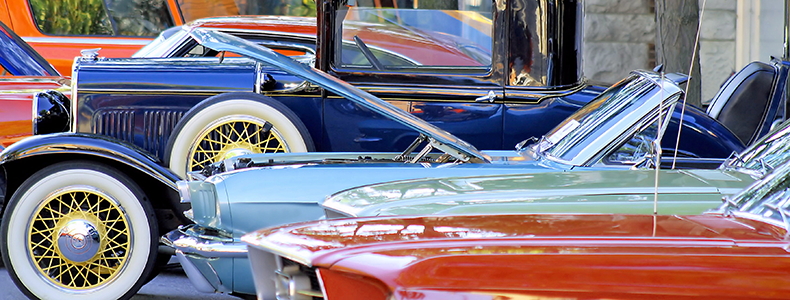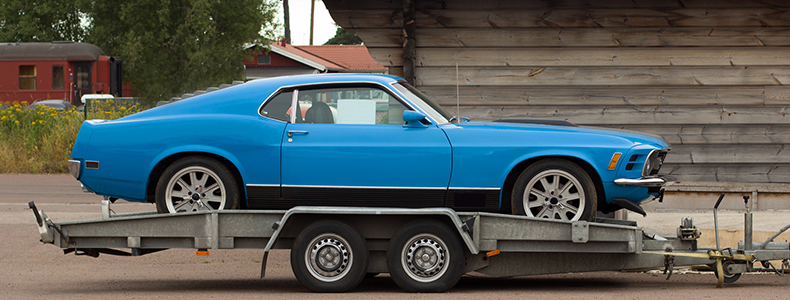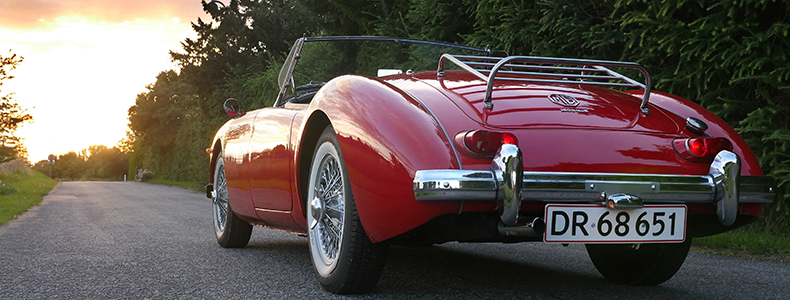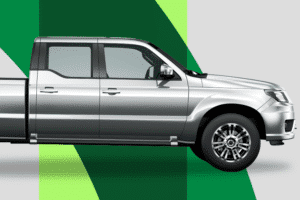Shipping a classic car goes beyond a simple shipping job. It represents the careful relocation of history, craftsmanship, and precious memories. With their unique requirements and increased value, vintage vehicles require heightened consideration and expertise during shipping.
In this article, we’ll explore the nuances that play a role in determining the best shipping methods for classic cars, outlining the best practices to ensure a seamless and secure relocation. Here’s everything you need to know about classic car shipping to make the best decisions for your vehicle.
WHY CLASSIC CARS NEED SPECIAL ATTENTION

When it comes to classic cars, shipping requires a meticulous approach to preserve the vehicle’s history. Let’s explore why classic cars demand special attention during transit:
INTRINSIC VALUE
Classic cars are more than just a mode of transportation. They’re often a significant investment embodying historical and cultural value.
Their intrinsic value goes beyond their monetary worth, representing craftsmanship and ingenuity that’s hard to replicate in contemporary vehicles. Because of their rarity and uniqueness, it’s essential to transport them with the utmost care and precision to maintain their value and pristine condition.
DELICATE NATURE
Given their age and construction materials, classic vehicles can be considerably more delicate than their modern counterparts. Many classic cars contain parts no longer in production or utilize fabrics susceptible to damage under current environmental conditions.
Furthermore, their intricacies lie in delicate finishes, custom paint jobs, and rare materials, which can be sensitive to temperature fluctuations, moisture, and physical impacts. This fragility warrants specialized handling and transportation methods to prevent any potential damages.
HISTORICAL SIGNIFICANCE
Classic vehicles are rolling artifacts, each telling a story of a past era. They embody their time’s engineering prowess and aesthetic preferences, making them a living record of automotive history. Transporting these vehicles requires giving careful attention to prevent damages or losses that could erase pieces of automotive history.
In light of these aspects, shipping classic cars requires an approach grounded in expertise, respect for their heritage, and a commitment to preserving their integrity. Through meticulous planning and careful execution, the historical and intrinsic value of these vehicles can be successfully transported without losing their original charm and significance.
COMMON CHALLENGES IN CLASSIC CAR SHIPPING
Shipping a classic car can be challenging. Given their rarity and the significant investment in them, it’s paramount to anticipate and navigate the potential pitfalls that might occur during the transition. Here are some of the most common challenges in the shipping process:
- Environmental Factors: Classic cars are notably sensitive to environmental factors. The adverse effects of prolonged exposure to sunlight, moisture, and fluctuating temperatures can affect the vehicle’s exterior and interior. Therefore, it’s critical to choose a shipping option that offers protection against unpredictable weather and other environmental factors that might compromise the car’s condition.
- Damage During Loading/Unloading: Classic cars, with their vintage components and often lower ground clearance, require specialized equipment and experienced personnel to handle them. Any mishandling during these phases can lead to scratches, dents, or severe damage. Working with service providers equipped with the tools and expertise to maneuver these valuable assets safely is imperative.
- Theft: Given their high value and desirability, classic cars can be attractive targets for theft during transportation. This necessitates heightened security measures to ensure the vehicle’s safety throughout shipping. Hiring a carrier that offers secured and monitored facilities, GPS tracking, and comprehensive insurance coverage can help deter potential theft and offer peace of mind.
To mitigate these challenges, take the time to thoroughly research carriers and assess their capabilities, including their experience with handling classic cars, the security measures in place, and their approach toward safeguarding vehicles from the elements. Additionally, acquiring appropriate insurance coverage (or added protection) that considers the unique value of the classic car is vital.
In essence, addressing these challenges necessitates vigilance, expertise, and adopting best practices in shipping logistics to ensure your classic car reaches its destination in pristine condition.
ENCLOSED VS. OPEN TRANSPORT FOR VINTAGE CARS
When transporting vintage cars, choosing between enclosed and open transport is crucial. Here are the pros and cons to help you make an informed choice.
ENCLOSED TRANSPORT
Enclosed transport involves transporting shipments within a covered carrier, protecting them from external elements and road debris. This type of transport ensures higher safety and security than open transport, making it a preferred choice for luxury, classic, or high-value vehicles. It might be a more expensive option, but it offers peace of mind as it significantly reduces the risk of damage during transit.
ENCLOSED TRANSPORT BENEFITS:
- Superior Protection: Enclosed transport offers comprehensive protection from environmental elements like dirt, dust, rain, and snow, ensuring your classic car remains pristine throughout the journey.
- Enhanced Security: These carriers often have superior security features, safeguarding your vehicle from potential theft or vandalism.
- Specialized Handling: Enclosed carriers are often equipped with hydraulic lift gates and climate control systems, offering the specialized handling necessary for vintage cars.
ENCLOSED TRANSPORT DRAWBACKS:
- Cost: Enclosed transport can be significantly more expensive than open transport due to the added benefits and features.
- Limited Availability: Finding an available enclosed carrier can be challenging, especially during peak seasons, due to limited capacity.
OPEN TRANSPORT

Open transport is a popular, cost-effective method of transporting vehicles where they’re loaded onto an available trailer and exposed to the elements. Despite the exposure, it’s generally a safe method of transport, being widely used to move new and used vehicles over long distances. Shippers choosing this method typically have access to flexible schedules and quicker delivery times. It’s suitable for individuals seeking a balance between safety and affordability.
OPEN TRANSPORT BENEFITS:
- Cost-Effective: Open transport is generally more affordable than enclosed transport, making it a viable option if you’re on a tighter budget.
- Easier to Arrange: Due to higher availability, arranging open transport can be quicker and easier than enclosed transport.
OPEN TRANSPORT DRAWBACKS:
- Exposure to Elements: Your classic car will be exposed to environmental elements, which can potentially damage the vehicle’s exterior and interior.
- Security Concerns: Open transport might pose higher risks of theft and vandalism as the vehicle is visibly accessible.
PRE-TRANSPORTATION PREPARATIONS FOR CLASSIC CARS
Before you hand over your vintage vehicle to a career, be sure to prepare your vehicle for a smooth and secure transit. Here’s how to get started.
- Cleaning: Start with a thorough cleaning of the car. This preserves its condition and allows for a detailed inspection where any existing dents, scratches, or damages can be documented accurately.
- Documentation: Ensure you have all necessary documents, including registration, insurance, and any other paperwork that verifies the ownership and value of the car.
- Emptying Fuel: It’s recommended to reduce the fuel level to about a quarter tank. This reduces the vehicle’s weight and minimizes potential hazards during transportation.
- Securing Loose Parts: Secure or remove any loose parts or custom add-ons to prevent them from getting damaged or lost during the journey. Items like custom mirrors, spoilers, or antennae should be adequately secured.
- Mechanical Check: Conduct a thorough automotive check to identify and fix any leaks or mechanical issues that might pose a problem during transit.
- Personal Belongings: Remove personal belongings from the vehicle, as the transporter’s insurance does not cover them and they can add unnecessary weight to the shipment.
Following these steps can help safeguard your vintage vehicle from potential damages and ensure a seamless shipping process, securing its value and beauty for years.
INSURANCE AND VALUATION CONSIDERATIONS
Entrusting your vintage car to a service provider comes with potential risks. As a result, it’s paramount to secure appropriate insurance coverage (or purchase a uShip Protection Plan) and obtain an accurate vehicle valuation before shipping. Here’s why:
- Comprehensive Coverage: Given their significant value, it’s important to seek comprehensive insurance coverage that protects against potential damages, theft, or loss during transit. Discuss the specifics of the range with your carrier to ensure all potential risks are covered.
- Accurate Valuation: Obtain an accurate valuation of your classic car before shipping to determine the appropriate insurance coverage level. Considering the appreciation in the value of vintage cars, it’s recommended to work with a professional appraiser who understands the nuances of classic vehicles for a precise valuation.
- Documentation: Document the current condition of your vehicle thoroughly, with pictures and detailed notes, in case you need to file a claim post-transportation. This helps establish a clear baseline, making the claims process smoother if discrepancies occur.
TIPS FOR CHOOSING THE RIGHT CLASSIC CAR CARRIER

Choosing a trustworthy service provider is crucial to ensure your classic car’s safety and condition during transit. Here are some tips to help you make the right choice:
- Experience: Consider the knowledge of the carrier, especially in handling vintage cars. A service provider with a proven track record in this niche is generally more reliable.
- Reviews and Testimonials: Research and read reviews and testimonials from other classic car owners who have utilized the carrier. Personal experiences can offer key insights into the carrier’s reliability and quality of service.
- Equipment and Facilities: Ensure the service is equipped with modern facilities and tools required to safely handle and transport classic cars, including hydraulic lift gates and climate-controlled environments.
- Specialization: Look for service providers that specialize in vintage car transport. They’re more likely to understand the unique requirements and offer a service tailored to your needs.
POST-TRANSPORTATION CHECKS AND PRECAUTIONS
After receiving your classic car post-transit, it’s time to conduct a thorough inspection to assess its condition. Here’s a guide to assist you in this process:
- Immediate Inspection: Conduct a close inspection of the car in the presence of the delivery personnel to note any discrepancies or damages.
- Document Discrepancies: If any discrepancies are found, document them meticulously with pictures and detailed descriptions. This documentation will be vital if you need to file a claim.
- Test Drive: Take the car for a short test drive to ensure no mechanical damages have occurred during transportation.
CONCLUSION
Entrusting your prized classic car with a carrier is a significant decision that requires meticulous planning and careful consideration.
The importance of choosing a service provider that understands the value and nuances of vintage vehicles can’t be overstated. Each step is pivotal to safeguard your investment, from securing the right insurance coverage to choosing a service provider with proven expertise.
When you choose uShip, you’ll have the peace of mind that your classic car is in the hands of top-rated carriers who prioritize the safety of your car’s transport. Get Started Now!
CLASSIC CAR SHIPPING FAQS
How much does it cost to ship a classic car?
The cost can vary significantly based on various factors, including the shipping distance, type of transport chosen (enclosed or open), and current demand. Generally, classic car shipping ranges anywhere from a few hundred to a few thousand dollars or more. It’s best to obtain quotes from multiple service providers for an accurate estimate.
Is it safer to use enclosed transport for classic vehicles?
Yes, enclosed transport offers enhanced protection from environmental elements and potential damages, making it a safer option for shipping classic vehicles.
How do I prepare my vintage car for transportation?
To prepare your classic car for shipping, be sure to:
- Clean the vehicle thoroughly
- Secure any loose parts
- Document the current condition with photos
- Empty the fuel tank to about a quarter
- Remove personal belongings
Do classic cars require special insurance during shipping?
Considering classic cars’ high value, it’s recommended to secure special insurance coverage that offers comprehensive protection against potential risks and damages during transportation. Consider purchasing a uShip Protection Plan at checkout for ultimate peace of mind.
What documentation is needed for shipping antique vehicles?
Essential documentation includes the vehicle’s registration, insurance papers, and a detailed report of your car’s current condition, including pictures. You might also need documents proving ownership and an appraisal for insurance purposes.
How can I verify the condition of my car after shipping?
Conduct a detailed vehicle inspection upon delivery, comparing its condition with the pre-transport documentation and photos. Look for any discrepancies or damages and document them immediately.
Are classic cars more susceptible to damage during transport?
Yes. Due to their age and delicate nature, classic cars might be more susceptible to damage during transport compared to modern vehicles. Hence, opting for specialized services with experience handling classic cars is recommended.
How do I choose a suitable shipping service for my vintage car?
Choose a service provider with experience in transporting vintage cars, good reviews from previous clients, and the necessary equipment and facilities to handle classic vehicles safely. Also, consider their insurance provisions and whether they offer specialized services for classic cars.



